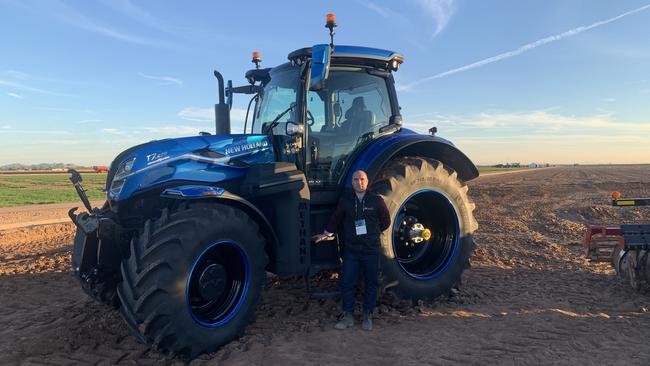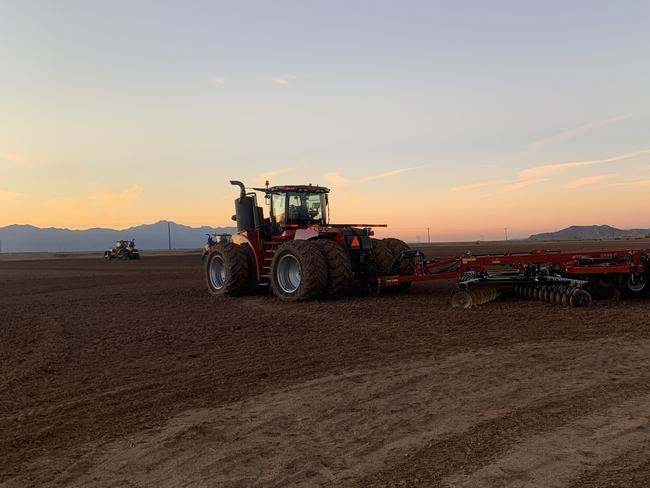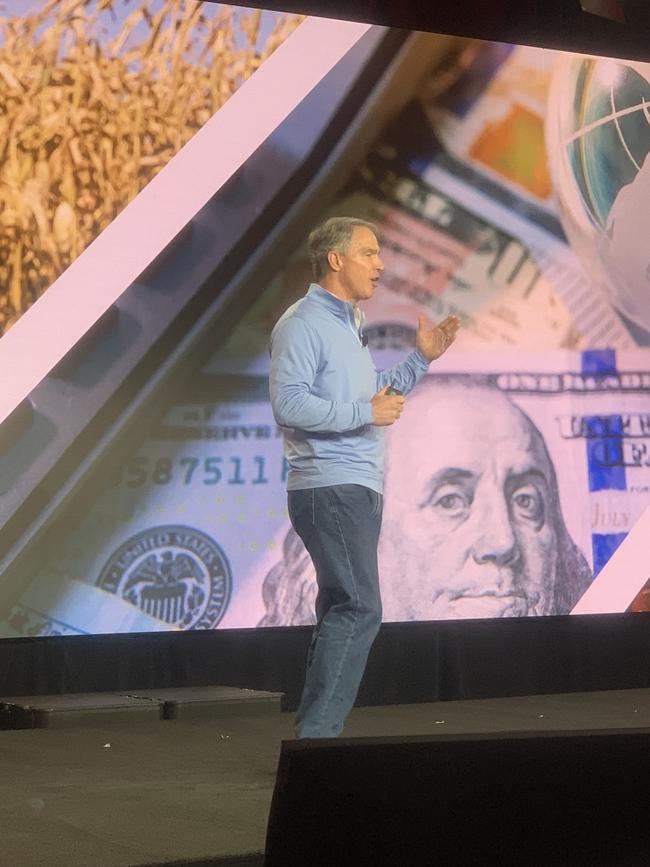Hi-tech tractor evolution ploughing on
Just two decades after auto-steer technology started to guide tractors in a straight line, full automation represents the next giant leap forward for farm machinery.

At first glance the big tractor dragging a plough through the dirt on a farm outside Phoenix, Arizona, appears like any other.
Only on closer inspection, as the tractor draws near a group of journalists and investors gathered to see the latest in farming machinery technology, is its true significance revealed.
The cab, where a driver would usually sit to steer the vehicle, is conspicuously empty.
The 380 horsepower tractor, tiller in tow, finishes the straight row it has recently ploughed and turns itself to begin a new one.
It repeats the process until the paddock is fully tilled.
Just two decades after auto-steer technology started to guide tractors in a straight line, full automation represents the next giant leap forward for farm machinery.
In a paddock adjacent to the tiller, a giant combine harvester moves through a corn crop.

When the grain bin on-board the harvester fills, another tractor towing a chaser bin moves across the paddock and sidles up next to the harvester, positioning itself perfectly beneath an auger that begins pouring the grain into the trailer.
It’s a routine scene on farms worldwide, but the unusual thing in this instance is the tractor towing the bin is driverless.
When the harvester is finished unloading the corn, the driver hits a button and the second tractor beside it pulls away and waits nearby for the next payload.
On the next paddock over, a small blue New Holland tractor, also without a driver, moves silently over tilled ground. Silently, because it is powered entirely by electricity – an industry-first for a fully autonomous utility tractor that promises “zero emissions”.
The star of the show at the recent CNH Industrial tech day at a University of Arizona farm was powered by another fuel type.
The world’s first liquefied natural gas tractor, the T7, is still in prototype form but stands to revolutionise the industry by tackling the challenges of lowering input costs and reducing emissions.
Powered entirely by liquid methane, the New Holland tractor has been in use on a dairy farm in England over the past few months.
The Cornwall dairy farmers gather slurry from their cattle and capture the methane emitted from it. The gas is refined on-farm and used to power the T7.
The result is a 180 per cent reduction in emissions, meaning that capturing and using the methane has a net benefit on the environment.
CNH head of zero emissions Stefano Fiorati says the company is making a big bet on methane and electric power. “The tech in this tank is more commonly used in spacecraft than in agriculture,” he says of the T7. “The running cost is 30 per cent less than diesel and it’s half as noisy.”
CNH Industrial plans to release the products for commercial sale within the next few years, but it faces a stern challenge from other leading manufacturers as machinery companies jostle to win the tech race.
“We just passed over eight billion people in the world,” CNH chief executive Scott Wine says at the company’s Silicon Valley-style product launch.
“That’s a lot of mouths to feed. There’s not much more arable acreage so our focus on bringing technology to bear to solve those problems is significant.”
The aim, he says, is to make farming more efficient, productive and profitable and to help address problems like sustainability and labour shortages. To that end, CNH has acquired several technology-focused start-ups.

While consecutive good seasons for local farmers have prompted equipment purchasing sprees, most technology unveiled in Phoenix is years away from reaching the Australian market.
Yet launches like CNH’s provide a glimpse of what’s to come, says chief digital product officer Parag Garg. “Profitability increases when farmers use all resources more efficiently, with less waste of seeds, fertilisers, pesticides and water consumption. Precision farming supports sustainability, reducing greenhouse gas emissions and overall use of fossil fuels. This is truly where less is more.”
The Australian travelled to Phoenix as a guest of CNH Industrial.




To join the conversation, please log in. Don't have an account? Register
Join the conversation, you are commenting as Logout